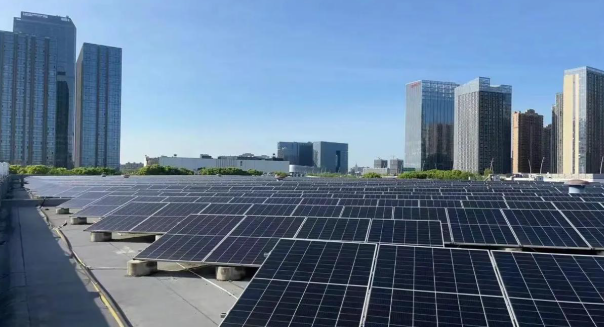
Solar power generation is a technology that uses solar energy to generate electricity, mainly by converting sunlight energy into electrical energy through solar cells. Solar cells use the photovoltaic effect, that is, when light shines on the semiconductor material of the solar cell, photons excite electrons to release from covalent bonds, forming electron-hole pairs, and then generating current. This process does not require mechanical parts and mainly relies on electronic components, so the equipment is refined, reliable, stable and has a long life.
Principle of solar power generation
The core principle of solar power generation is the photovoltaic effect. When light shines on the semiconductor material (such as silicon) of the solar cell, the energy of the photon is sufficient to excite electrons to release from covalent bonds, forming electron-hole pairs. These electrons and holes move to positively and negatively charged areas respectively under the action of the electric field, thereby generating current. The more light energy the interface layer accepts, the greater the current generated.
Common faults of solar power generation systems include the following:
- Battery failure: Battery aging or increased internal resistance will lead to a decrease in storage capacity and affect the system output power. The solution is to replace the battery or check whether the battery wiring is loose or corroded. •Solar panel failure: Damaged panels or loose connections will affect the efficiency of power conversion. The solution is to replace damaged panels or tighten the connections.
- Inverter failure: Overheating or damage to the inverter will cause the DC power to be unable to be converted into AC power. The solution is to add ventilation equipment, reduce the ambient temperature or replace the inverter.
- System connection failure: Loose or corroded connections will cause poor system connection. The solution is to check and tighten the connections, and replace corroded connections if necessary.
- Monitoring system failure: The inability of the monitoring system to connect or inaccurate data will affect system monitoring. The solution is to check the network connection and whether the sensor is working properly.
The application of infrared thermal imaging technology in solar power generation has significant benefits, which are mainly reflected in the following aspects:
- Real-time monitoring and fault location: Infrared thermal imagers can monitor the temperature distribution of solar panels in real time, and accurately locate the hot spot position of photovoltaic modules through non-contact temperature measurement and thermal distribution imaging. These hot spots are one of the main reasons for the reduction in efficiency of photovoltaic power stations. Infrared thermal imaging technology can quickly detect and locate these hot spots, help operation and maintenance personnel to perform maintenance in time, and ensure the safe and stable operation and efficient power generation of photovoltaic power stations.
- Improve power generation efficiency: Infrared thermal imagers can detect hot spots and hidden cracks on solar panels. Hot spots will seriously affect power generation efficiency, while hidden cracks may cause the performance of solar panels to decline. Through infrared thermal imaging technology, these problems can be discovered and handled in time, thereby improving power generation efficiency.
- Reduce maintenance costs: Traditional detection methods require power-off detection, while infrared thermal imaging technology can be used to detect during the operation of solar panels without power off, greatly improving detection efficiency. In addition, through remote detection and automatic alarm functions, the frequency of manual inspections can be reduced, reducing maintenance costs.
- Safety assurance: Infrared thermal imagers can also be used to detect temperature anomalies in inverters and electrical systems. Overheating of inverters is a hidden danger of causing fire. Through infrared thermal imaging technology, overheated components can be discovered and handled in time to ensure the safety of the power generation system.
- Long-term monitoring and management: Infrared thermal imaging cameras can be used in conjunction with thermal imaging monitoring systems to monitor solar panels over a long period of time. Once abnormal temperature is detected, the system can automatically send an alarm or notify maintenance personnel through a buzzer to ensure that potential problems are discovered and handled in a timely manner.


